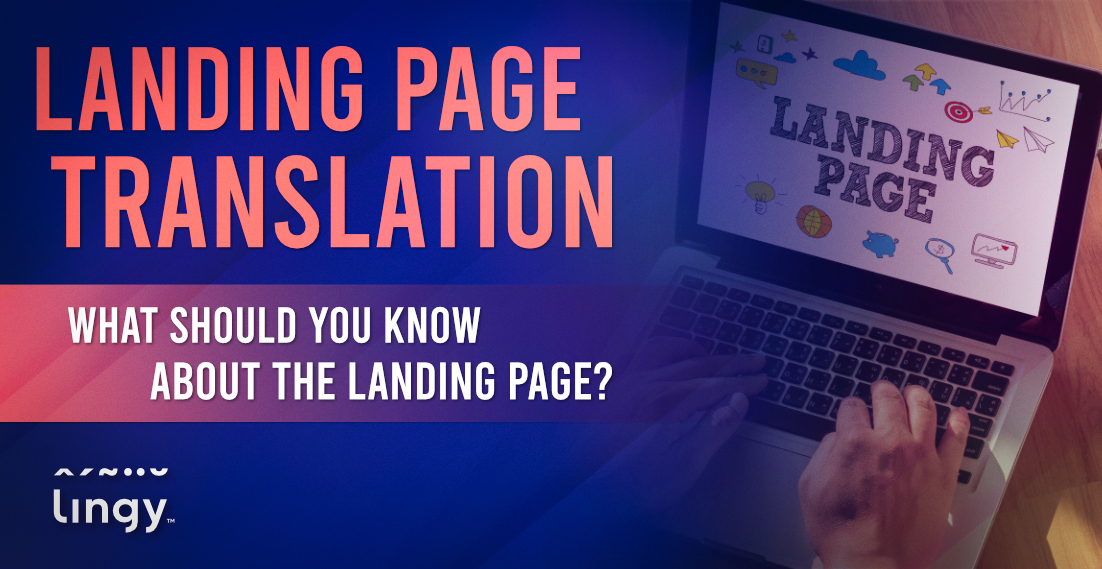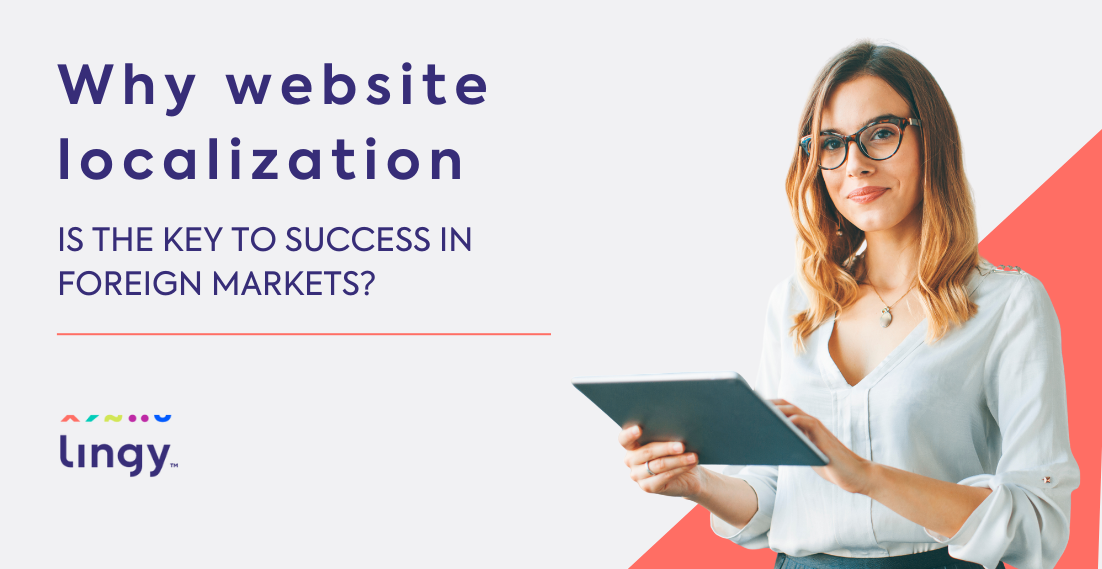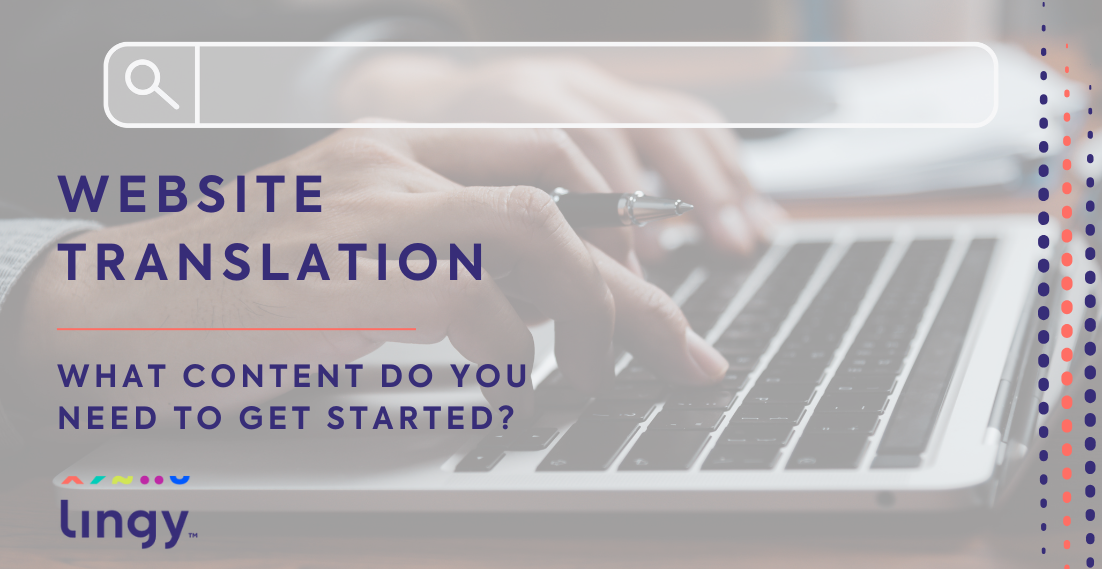Landing page translation – what should you know about the landing page?

Translations for e-commerce include the translation of online shop content (including product descriptions), website content, keywords for SEO, profile content or SEO-compliant marketing texts. A landing page can be associated with all these services and elements of product and service promotion.
What kind of site is this and why do we come across it so often, tempted by advertising in a browser or social media? Why is the translation of the texts that will appear on this particular calling card so important for the success of the campaign and the sales results?
We provide translation services for companies
What is a landing page?
Before we get into the details of the translation process, localisation or content implementation, let us remind you what a landing page is.
It is a website designed to gather as much traffic as possible and generate a high conversion rate (in the case of the e-commerce industry, this is simply a purchase of a product). This usually is related to the launch of a marketing campaign for a particular service or element of an offer or a promotion, such as Black Week. Its launch does not require the commitment of such resources as is the case of a shop or an extensive training platform. Properly configured analytics also allow you to gather information about your target audience, which can translate into growth and increased sales in other areas as well.
Quality over quantity – little content, lots of specifics
The content on the landing page is therefore focused on a single theme, these sites are not overloaded with text, but contain slogans that are typically related to sales and marketing. Information is scarce – the user is supposed to learn specifics, not read multi-page posts. The main goal for a company or person working on content should be to create a catchy call to action.
Its effect – depending on the objective of the campaign in question – should be:
- purchase of a product (including a digital product),
- completion and submission of a contact form,
- signing up for an event (usually a webinar),
- downloading the thematic e-book.
As far as the graphic layer is concerned, a simple, non-distracting solutions are chosen. To be consistent with the homepage (e.g., of the shop), the logo of the respective company is used, as well as the colours and fonts described in the brand book. Despite a different address than an online shop, such a website will immediately evoke pleasant associations in the potential customer and identify them with the e-commerce brand or another industry. Trust in a particular company that has been built up over years can translate onto a real benefit in the form of a purchase or other chosen conversion.
An important element of a marketing campaign
A landing page is called so for a reason. The user does not arrive at it by accident, but as a result of redirection. This usually happens by clicking on a banner, a search engine ad after typing in a specific phrase, a link in InstaStories or a link placed in a social media post.
The advertising campaign for such a landing page is consistent with what is on it – both graphically and linguistically. Promotional materials must not be misleading. This is why an internet user (i.e., a potential customer) clicks on a link or banner, so that they can find out more details about the topic of interest. In their mind, curiosity and sometimes the much-vaunted need by marketing companies, arises.
Multilingual projects? Present yourself properly in foreign markets!
This type of website can be created without any knowledge of coding or programming principles. The platforms offer ready-made solutions to shops and companies. However, when working on international projects, simple preparation of graphics or texts is not enough.
In order to present itself in the best possible way from a visual point of view and to appear high in the search results, foreign-language content must be distinguished by consistency and faultlessness. In the case of several language versions of the landing page, the content must be translated correctly. And not by free online translators, automatic plug-ins or first-year foreign language students. In many cases, the service of a native speaker will be necessary.
Adapting marketing content in foreign languages – how to take care of the texts for the website?
The translation of the online shop, the translation of product descriptions and, finally, the translation of landing page content all have a common denominator in our office. Or several, actually.
- We engage experienced translators and native speakers from around the world to work on the project. A large base of collaborators allows us to present flawless content which can also be additionally verified, and to propose short project deadlines. And as you know, when it comes to promoting a new product or service, time is of the essence.
- Customer service runs smoothly with a supervisor assigned to the project. The customer does not have to contact different departments, just this one designated person. The time saved this way can be used to complete other tasks or simply relax.
- Content translated according to SEO principles allows for better search engine rankings in different markets. For advertising campaigns, keyword translations – relevant to the country and the needs of the foreign-speaking audience – will also be useful.
- Finally, the location, which is indirectly linked to the location on the map. We ensure that the translated content linguistically matches the style of the region, country or specific target group using e.g., professional jargon.
The localisation process, or something more than linguistic correctness
In the context of translations we often write about localisation for a reason. It allows to preserve the realities of the foreign market, and not only in terms of language. Grammatical and spelling correctness is one thing. Language is alive and much like its audience it sets trends and can hide figurative meaning in single words. Not every translator has knowledge of a country’s culture at such an advanced level to play with words when translating CTAs or contents of the graphic elements. Literal translation can do more harm than good. It is therefore necessary to present oneself as well as possible in foreign markets from the get go.
The relevant language version must be properly implemented
When it comes to translation of a website – or rather a landing page – it is worth betting on experience, as well as technical and cultural knowledge.
We use cultural knowledge at the translation stage. Technical expertise is used during the download of the content for translation and implementation of the finished translation. This way, the client does not have to worry about which of their employees will manage to find the resources to implement foreign-language texts.
Schedule your e-commerce translations today!
A landing page is a showcase for a brand and a showcase for a website. It takes the customer to the home page of a specific company or gives them opportunity to fill in a contact form. It must therefore be refined in every respect.
Mistakes can scare off a potential customer or business partner. It is thus necessary to take care of a proper content in terms of language and culture.
Translation of a landing page is an opportunity for a successful first meeting with a potential customer. Explore the services of our translation agency and present yourself showing your best content, preferably correctly translated.
Find out more about translating:
Why website localization is the key to success in foreign markets?
Find out why website localization (and not just translation) is crucial for B2B success in foreign markets. Discover 5 benefits for your business.
Website translation – what content do you need to get started?
Let’s see how to approach website translation strategically and decide which content is essential at the start.
Christmas Sale and Google Ads Campaign – How Marketing Translation Boosts Your Holiday Advertising
The Christmas season is a peak period for every marketing team and marketer. From e-commerce stores to service providers, everyone competes for the attention of shoppers ready to spend. A well-planned Google Ads campaign can make or break your holiday sales. But even the most creative advertising copy will fall flat if your message isn’t […]
Q4 Marketing Campaigns – The Last Call to Translate Your Online Content
In the last quarter of the year, many companies – especially in e-commerce – record their highest sales figures. Christmas shopping, clearance events, and Black Friday promotions encourage purchases not only because of discounted prices but also, due to powerful marketing campaigns that spark consumer excitement.



